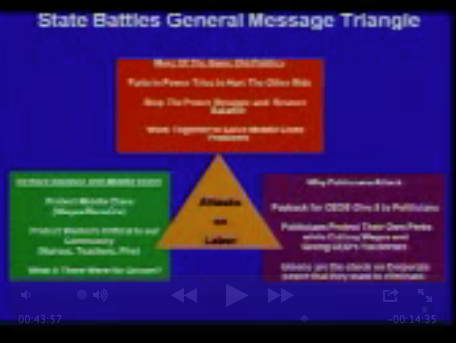This recent decision has been in the making since 1990 when the class action Coleman v. Brown was filed in District Court that found that California “prisoners with serious mental illness do not receive minimal, adequate care.” Then in 2001 Plata v. Brown said “the State (California) conceded that deficiencies in prison medical care violated prisoners’ Eighth Amendment rights and stipulated to a remedial injunction.”
In 2005 when California did not comply with the “remedial injunction” a three-judge court was empowered “to order reductions in the prison population.” All of this is further explained in the recent ninety-one-page U. S. Supreme Court decision that can be found under “Recent Decisions” here and selecting Brown v. Plata.
Reading the text of the decision the court “concluded that it would be possible to reduce the prison population ‘in a manner that preserves public safety and the operation of the criminal justice system.'”
The decision says the state has created “a certain and unacceptable risk of continuing violations of the rights of sick and mentally ill prisoners, with the result that many more will die or needlessly suffer.” Further that, “The constitution does not permit this wrong.”
The court used a statement from the former heads of correctional systems in Washington, Maine, and Pennsylvania, to justify that California prisons are “criminogenic” and a statement from a chief probation officer who testified that “it seems like (the prisons) produce additional criminal behavior”. In that same passage California’s Little Hoover Commission stated, “California communities are burdened with absorbing 123,000 offenders returning from prison, often more dangerous than when they left.”
The court also found, “that various available methods of reducing overcrowding would have little or no impact on public safety.”
But Justice Scalia and Thomas strongly disagree; here are some excerpts from their scathing dissent where they refer to the decision as a “judicial travesty”.
Today the Court affirms what is perhaps the most radical injunction issued by a court in our Nation’s history: an order requiring California to release the staggering number of 46,000 convicted criminals.
There comes before us, now and then, a case whose proper outcome is so clearly indicated by tradition and common sense, that its decision ought to shape the law, rather than vice versa. One would think that, before allowing the decree of a federal district court to release 46,000 convicted felons, this Court would bend every effort to read the law in such a way as to avoid that outrageous result. Today, quite to the contrary, the Court disregards stringently drawn provisions of the governing statute, and traditional constitutional limitations upon the power of a federal judge, in order to uphold the absurd.
The proceedings that led to this result were a judicial travesty. I dissent because the institutional reform the District Court has undertaken violates the terms of the governing statute, ignores bedrock limitations on the power of Article III judges, and takes federal courts wildly beyond their institutional capacity.
Rather, the plaintiffs’ claim is that they are all part of a medical system so defective that some number of prisoners will inevitably be injured by incompetent medical care, and that this number is sufficiently high so as to render the system, as a whole, unconstitutional.
My general concerns associated with judges’ running social institutions are magnified when they run prison systems, and doubly magnified when they force prison officials to release convicted criminals.
In view of the incoherence of the Eighth Amendment claim at the core of this case, the nonjudicial features of institutional reform litigation that this case exemplifies, and the unique concerns associated with mass prisoner releases, I do not believe this Court can affirm this injunction. I will state my approach briefly: In my view, a court may not order a prisoner’s release unless it determines that the prisoner is suffering from a violation of his constitutional rights, and that his release, and no other relief, will remedy that violation. Thus, if the court determines that a particular prisoner is being denied constitutionally required medical treatment, and the release of that prisoner (and no other remedy) would enable him to obtain medical treatment, then the court can order his release; but a court may not order the release of prisoners who have suffered no violations of their constitutional rights, merely to make it less likely that that will happen to them in the future.
I would reverse the decision below for three interrelated reasons. First, the three-judge court improperly refused to consider evidence concerning present conditions in the California prison system. Second, the court erred in holding that no remedy short of a massive prisoner release can bring the California system into compliance with the Eighth Amendment. Third, the court gave inadequate weight to the impact of its decree on public safety.
In taking this view, Congress was well aware of the impact of previous prisoner release orders. The prisoner release program carried out a few years earlier in Philadelphia is illustrative. In the early 1990’s, federal courts enforced a cap on the number of inmates in the Philadelphia prison system, and thousands of inmates were set free. Although efforts were made to release only those prisoners who were least likely to commit violent crimes, that attempt was spectacularly unsuccessful. During an18-month period, the Philadelphia police rearrested thousands of these prisoners for committing 9,732 new crimes. Those defendants were charged with 79 murders, 90 rapes, 1,113 assaults, 959 robberies, 701 burglaries, and 2,748 thefts, not to mention thousands of drug offenses. Members of Congress were well aware of this experience.
I fear that today’s decision, like prior prisoner release orders, will lead to a grim roster of victims. I hope that I am wrong. In a few years, we will see.

COMMENTS
Please let us know if you're having issues with commenting.